Posts in Category: News and Events
Stress and Anxiety in Cats and Dogs
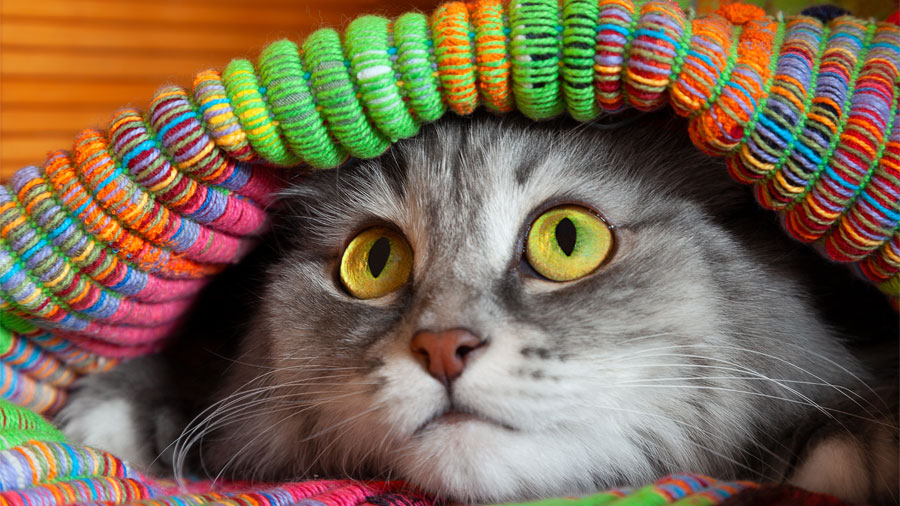
Cats and dogs, just like people, cope with nerves and stress in different ways. For example, Fluffy might tremble his little legs off at his annual wellness exam, while Cleo the cat might need emergency care for a urinary blockage after an owner’s weekend away from home. Coco might attempt to chew the front door down every time mom takes the garbage out, and Simba might react to a new kitten brought home from the shelter by urinating every single place except his litter box.
Pets can display stress and anxiety in various ways, and it is important to recognize the signs, which can impact your pets’ over all well-being. Knowing how to recognize and manage the signs can help your pet feel safe and comfortable in out-of-routine situations or before a known stressor arises.
Owners also need to recognize and distinguish between anxiety and aggression. Fortunately early training and socialization can yield great benefits.
Recognizing Signs
A very common sign of stress is change in overall behavior. Whether a pet is hiding and avoiding interaction or being extremely clingy and constantly seeking attention, any change outside of their usual behavior can be indicative of stress or other potential health concerns. Changes in appetite, both increased and decreased, along with vomiting or diarrhea can also be signs of stress. Any changes to your pet’s behavior requires veterinary input to rule out underlying health conditions as the culprit.
Learn to recognize patterns in your pet’s behavior. For example, if every time there is a thunderstorm, Nala hides in the closet for three days and doesn’t eat any of her favorite treats, maybe we need to pre-treat her with calming supplements or her favorite nature background sounds when it’s raining. If Kitty overgrooms herself every time her pet parents are away for the weekend, maybe she needs anxiety medication while they are away or a daily calming probiotic in the months before the trip.
Pets can’t always tell us when they are stressed or anxious, so they show us. It is important to be able to distinguish those changes. Other signs that can be indicative of stress in a pet include excessive vocalization, destructive behaviors such as excessive chewing/licking or digging, avoidance or hiding, pacing or restlessness, inappropriate urination or defecation, changes in grooming behavior, shaking, panting, drooling, etc.
Common Causes
- Many pets experience separation anxiety when separated from their owners. It is more common in dogs than cats. It is difficult for pets to be left alone for extended periods. Pets with separation anxiety can often display behaviors such as excessive vocalization like barking or howling, destructive behaviors like chewing or biting items or themselves, or showing signs of distress like panting or pacing.
https://veterinarypartner.vin.com/default.aspx?pid=19239&id=10375180 - Situational anxiety is just as it sounds. Pets can get stressed with independent situations such as veterinary visits, car rides, grooming appointments, nail trims, baths, etc. This can also be a trauma response, so a thorough history is important to assess a patient as a whole.
https://veterinarypartner.vin.com/default.aspx?pid=19239&id=10052310
https://veterinarypartner.vin.com/default.aspx?pid=19239&id=10767212 - Dogs and cats have heightened senses and are more sensitive to loud noises. Noise phobia can include thunderstorms, fireworks, and even loud household items, like the blender or the vacuum. Loud knocks from guests or even the garbage truck can cause noise-related anxiety in some pets.
https://veterinarypartner.vin.com/default.aspx?pid=19239&id=4952947 - Changes in routine or environment such as moving to a new home, a new person/pet in the home, or just out-of-the-ordinary routine can lead to stress and anxious behaviors. Cats tend to be more sensitive to this than dogs.

Management
There are many ways to help manage stress and anxiety in cats and dogs. However, one shoe does not fit all. What works for one patient may not work for another patient. One patient might need calming music and a pheromone spray prior to a thunderstorm, while another needs a light sedative.
Environmental changes, enrichment, and supplements can serve as great tools to help alleviate mild anxiety and put some patients’ mind at ease in stressful situations. Such tools include calming supplements, pheromone sprays, calming music, calming probiotics, and ThunderShirts®. Helpful environmental changes may include moving Fluffy’s cat tree away from the scary window because he gets startled when the garbage truck passes weekly.
Puzzle toys, snuffle mats, and licking mats are great for enrichment, as they keep patients entertained and their brain stimulated to help cope with stress and anxiety. Licking mats can be a great hit. (Bonus points if you apply peanut butter, canned food, or plain yogurt!) Licking mats can also be frozen to help your pet stay cool in the summertime. Freezing also keeps them busy longer. Make sure you do your research on pet-safe treats.
While supplements and enrichment work well for some patients, others need anxiety medications for stressful situations. Some pets may require daily long-term mediations to manage stress, just as some humans do.
Medical management can sound scary, however there are many medications that can help alleviate stress and anxiety in your pet. Treatment of behavior disorders require training in addition to medications.
- Trazodone is used to manage short -term anxiety, such as vet visits, travel, car rides, thunderstorms, and fireworks. It works by increasing serotonin levels in the brain. Most pets experience relief within just two hours.
- Gabapentin is a multimodal drug that works well for pain, anxiety, and—surprisingly—seizures, depending on the dosing. It is commonly used in cats with situational anxiety and can reach peak activity within two hours.
- Fluoxetine is a long-term daily anxiety medication that is used for humans as well. It is an SSRI (selective serotonin reuptake inhibitor). Serotonin is a neurotransmitter associated with mood. As mentioned, fluoxetine is a long-term anxiety medication, and it may take weeks to see its full effects.
There are many ways to classify anxiety, and many different ways patients show clinical signs of anxiety. If you suspect your pet could be experiencing stress or anxiety, reach out to your local veterinarian or pet behaviorist.
— Dr. Angélica Calderón
Estrés y Ansiedad en Gatos y Perros

Así como las personas les dan nervios y estrés de diferentes maneras, los gatos y los perros también lo hacen. Esto puede variar desde Fluffy temblando con sus pequeñas patitas en su examen anual,o Cleo el gato presentándose en la clínica de emergencias con una obstrucción urinaria después de que su dueño se fue de fin de semana. También por ejemplo, Coco muerde la puerta de entrada cada vez que mamá saca la basura, o Simba orinando en cada planta excepto en su caja de arena después de traer a casa un nuevo gatito de afuera.
Las mascotas pueden mostrar estrés y ansiedad de diferentes maneras y es importante entender y reconocer los signos, causas y formas de manejar estos signos, ya que esto puede afectar el bienestar general de tus mascotas. Saber cómo reconocer y manejar estos signos puede ayudar a que tu mascota se sienta segura y cómoda en situaciones fuera de la rutina o como precaución antes de estresores ya conocidos. También es importante reconocer y distinguir la ansiedad de la agresión y hay grandes beneficios de el entendimiento y socialización temprano.
Reconociendo Señales
Una señal muy común es el cambio en el comportamiento general. Ya sea que una mascota se esté escondiendo y evitando la interacción o sea extremadamente dependiente y busque constantemente atención. Cualquier cambio fuera de su comportamiento habitual puede ser indicativo de estrés u otras posibles preocupaciones de salud. Cambios en el apetito, tanto en aumento como en disminución, junto con vómitos o diarrea, también pueden ser señales de estrés. Sin embargo, es muy importante buscar ayuda veterinaria ante cualquier cambio en tu mascota, ya que otras condiciones subyacentes de salud pueden mostrar señales similares y es importante descartar otras condiciones de salud como la causa.
También es importante reconocer los patrones en el comportamiento de tus mascotas. Por ejemplo, si cada vez que hay una tormenta Nala se esconde en el armario durante tres días y no come ninguno de sus bocadillos favoritos, tal vez debamos darle suplementos calmantes o sonidos de fondo de naturaleza que le gusten cuando llueve. Si Kitty se sobreacicala cada vez que sus dueños están fuera durante el fin de semana, tal vez necesite medicación para la ansiedad mientras están ausentes o un probiótico calmante diariamente meses antes.
Las mascotas no siempre pueden decirnos si están estresadas o ansiosas, así que nos lo muestran y es importante que podamos distinguir esos cambios. Otros signos que pueden ser indicativos de estrés en una mascota incluyen vocalización excesiva, comportamientos destructivos como masticar/lamer o cavar en exceso, evitación o esconderse, andar de un lado a otro o inquietud, micción o defecación inapropiadas, cambios en el comportamiento de acicalamiento, temblor, jadeo, babeo, etc.
Causas Comunes
- La ansiedad por separación es un tipo de estrés que muchos animales experimentan al ser separados de sus dueños, siendo más común en perros que en gatos. Les resulta difícil quedarse solos durante períodos prolongados. Las mascotas con ansiedad por separación pueden mostrar comportamientos como vocalización excesiva, como ladridos o aullidos; comportamientos destructivos, como morder o masticar objetos o a sí mismos; o mostrar signos de angustia, como jadear o caminar de un lado a otro.
https://veterinarypartner.vin.com/default.aspx?pid=19239&id=10375180 - La ansiedad situacional es exactamente lo que suena. Las mascotas pueden estresarse en situaciones independientes como visitas al veterinario, viajes en coche, citas de peluquería, cortes de uñas, baños, etc.
https://veterinarypartner.vin.com/default.aspx?pid=19239&id=10052310
https://veterinarypartner.vin.com/default.aspx?pid=19239&id=10767212 - Los perros y los gatos tienen sentidos agudizados y son más sensibles a los ruidos fuertes. La fobia al ruido puede incluir tormentas eléctricas, fuegos artificiales e incluso elementos ruidosos del hogar como la licuadora o la aspiradora. Cuando los invitados tocan la puerta o incluso el camión de la basura pueden causar ansiedad relacionada con el ruido en algunas mascotas.
https://veterinarypartner.vin.com/default.aspx?pid=19239&id=4952947 - CLos cambios en la rutina o el entorno, como mudarse a un nuevo hogar, la llegada de una nueva persona/mascota en casa, o simplemente salir de la rutina ordinaria, pueden llevar al estrés y comportamientos ansiosos; los gatos tienden a ser más sensibles a esto que los perros.
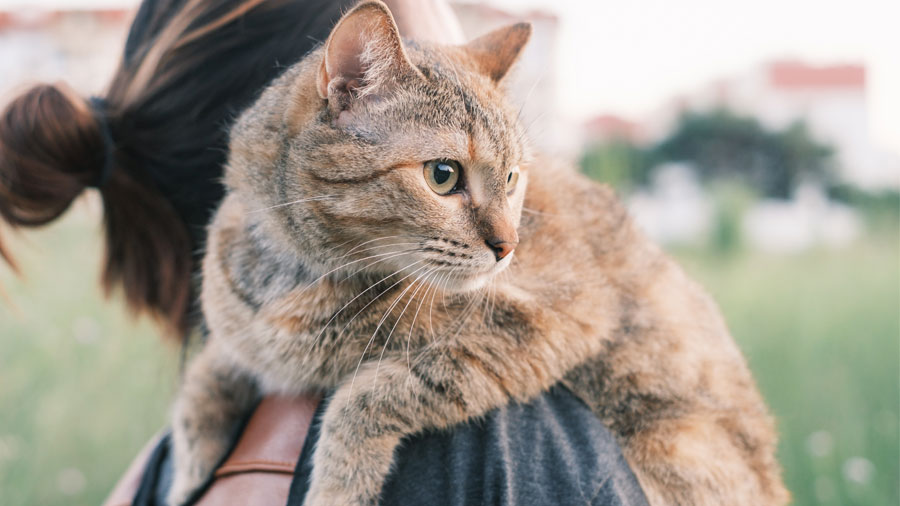
Mantenimiento
Hay muchas maneras de ayudar a manejar el estrés y la ansiedad en gatos y perros; sin embargo, un enfoque no sirve para todos. Lo que funciona para un paciente no necesariamente significa que funcionará para otro paciente. Un paciente podría necesitar música relajante y un spray de feromonas antes de una tormenta, sin embargo, otro paciente podría necesitar un medicamento sedante ligero.
Los cambios ambientales, el enriquecimiento y los suplementos pueden ser grandes herramientas para ayudar a aliviar la ansiedad leve en algunos pacientes y tranquilizarlos en situaciones estresantes. Estos incluyen suplementos calmantes, sprays de feromonas, música relajante, probióticos calmantes y ThunderShirts®. Esto también puede significar cambios ambientales como mover el árbol para gatos de Fluffy lejos de la ventana aterradora porque se asusta cuando pasa el camión de la basura semanalmente.
Los juguetes rompecabezas y las alfombrillas olfativas son excelentes para el enriquecimiento, ya que mantienen a los pacientes entretenidos y estimulan su cerebro para ayudar a afrontar el estrés y la ansiedad. Los suplementos y el enriquecimiento funcionan muy bien para algunos pacientes, sin embargo, muchos pacientes necesitan medicamentos para la ansiedad en situaciones estresantes y, a veces, incluso mediaciones a largo plazo diarias, al igual que los humanos.
La gestión médica puede sonar aterradora, sin embargo, hay muchos medicamentos que pueden ayudar a aliviar el estrés y la ansiedad en su mascota. El tratamiento de los trastornos de comportamiento requiere entrenamiento además de medicamentos.
- Trazodone es un medicamento que se utiliza para tratar la ansiedad a corto plazo, como visitas al veterinario, viajes, paseos en automóvil, tormentas y fuegos artificiales. Funciona aumentando los niveles de serotonina en el cerebro y la mayoría de las mascotas experimentan alivio en solo dos horas.
- Gabapentin es un fármaco multimodal que funciona bien para el dolor, la ansiedad y, sorprendentemente, para las convulsiones, dependiendo de la dosificación. Esto se usa comúnmente en gatos con ansiedad situacional y puede alcanzar su actividad máxima en dos horas.
- Fluoxetine es un medicamento para la ansiedad de uso diario a largo plazo que también se utiliza para humanos. Es un ISRS (inhibidor selectivo de la recaptación de serotonina), la serotonina es un neurotransmisor asociado con el estado de ánimo. Como se mencionó, la fluoxetina es un medicamento para la ansiedad a largo plazo y puede llevar semanas ver sus efectos completos.
Hay muchas maneras de clasificar la ansiedad y cada paciente que presenta signos clínicos puede ser muy diferente. Hablar con su veterinario es muy importante si sospecha que su mascota podría estar experimentando estrés o ansiedad.
— Dr. Angélica Calderón
It Really Ticks Me Off…

When I started practicing medicine in the dark ages (pre-iPhones) in Chicagoland, the only time I would ever see a tick is after a family came home from a camping trip or a weekend getaway in Wisconsin. Over the past few years, however, ticks have arrived in Chicago.
We have seen several dogs this year with ticks on them, and they haven’t gone farther west than the Kennedy.
Of course, ticks themselves don’t cause the problem: it’s what lurks inside their stomach that can be deadly.
Tick Vomit: Gross and Dangerous
That’s right, tick vomit—or really tick regurgitation into an animal’s bloodstream—is what causes tickborne diseases. A tick attaches to the animal it encounters and embeds its little head into the skin to start their blood meal. When the blood reaches the tick’s stomach, it activates the bacteria that causes the disease. Then the tick regurgitates the bacteria into the animal’s blood.
Depending on the tick and the bacteria, this process can take anywhere from 1 to 2 days. Most preventatives work by killing the tick before it has time to transfer the bacteria into the animal’s bloodstream.

What Does Tickborne Disease Look Like?
There are several different types of bacteria that cause what we call tickborne diseases, but they mostly all belong to the Rickettsial or Borrelia families. The most commonly seen diseases are Lyme, ehrlichiosis, anaplasmosis, and Rocky Mountain spotted fever. There are several other types, though less prevalent in the United States.
These diseases can present in a few different ways. Typically, the pet has fever and lethargy, but these diseases can get into the joints, causing a shifting lameness and puffy joints, a meningitis that can lead to head pressing, or other neurologic signs. They can also cause problems with platelet levels, leading to bruising or more serious issues.
Most of these clinical signs can be resolved with supportive care and the right antibiotic therapy. Unfortunately, dogs can—though rarely—get Lyme nephritis, which can lead to permanent damage of the kidneys and even death.
How Can We Know If Our Animal Was Exposed?
Diagnosis can be a bit tricky. To be honest, experts disagree on the best protocol and test to see if your animal has encountered one of these bacteria.
The most common test that we have in our arsenal is ELISA antibody testing (Idexx 4dx or Antech Accuplex). These tests identify if your dog has antibodies for Ehrlichia, Anaplasma, and Lyme. A positive means that your pet has come into contact with the bacteria, but it doesn’t necessarily mean that have the disease.
A lot of dogs will be able to fight off this disease and will have a positive antibody test, but never become sick. But these bacteria are sneaky little devils. They can lie dormant for months before causing an issue if they don’t cause immediate illness.
It can also take a few weeks if not months for the body to build up an antibody response, so this test may be negative immediately after you find a tick on your pup. We usually recommend getting a baseline test at time of exposure and test again no less than 6 weeks after the tick was found. If we think your dog is sick with a tickborne disease, we may recommend additional tests as well.
When Do We Treat?
This is another topic still being debated in the veterinary community. Some veterinarians believe that any positive test should be treated with antibiotics, while others say only treat when there are clinical signs. Still others say additional testing is needed.
At this time, we recommend treating with antibiotics when there is concern for an active infection, meaning your dog is acting sick. Treatment is usually a course of an antibiotic called Doxycycline.
—Dr. Alyssa Kritzman
Celebrating Veterinary Technician Week: Why CVTs and CSRs Are Vital to Your Pet’s Care
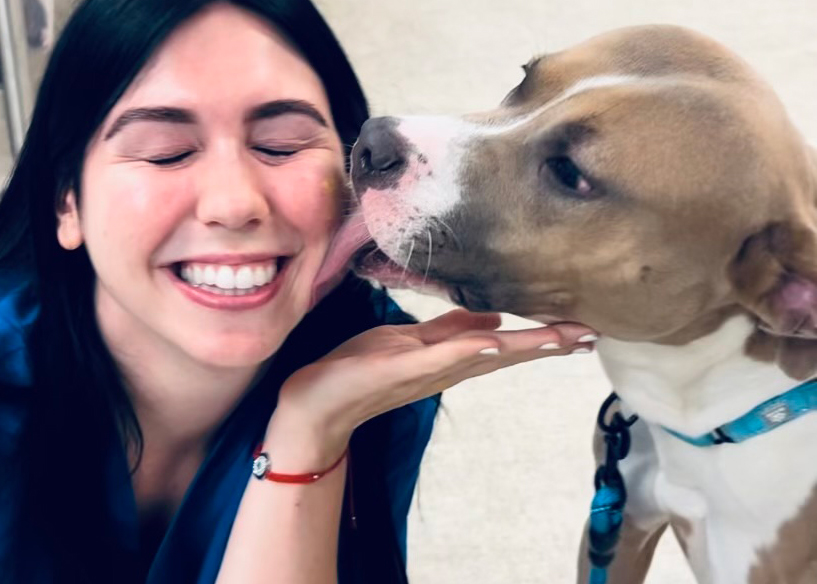
Veterinary Technician Week (October 13-19) is a time to recognize and celebrate the incredible work that certified veterinary technicians (CVTs), veterinary assistants, and customer service representatives (CSRs) do every day in the world of veterinary medicine. These professionals are the unsung heroes who ensure that your pet receives the best care possible, and they play a critical role in the smooth operation of any veterinary clinic, including ours.
The Role of Veterinary Technicians
Veterinary technicians are much more than “pet nurses.” They are highly skilled professionals trained to perform a wide range of duties, from drawing blood and running lab tests to assisting in surgeries, administering medications, and providing emergency care. They act as the veterinarian’s second set of hands, ensuring procedures run smoothly and your pet is comfortable throughout the visit.
Vet techs also provide invaluable support to pet owners. They take the time to explain medical treatments, show you how to administer medications at home, and often become trusted partners in your pet’s long-term care. Their knowledge, experience, and compassion make them essential to the success of every veterinary clinic.
The Importance of Customer Service Representatives
Customer service representatives are often the first and last point of contact when you visit our clinic. They greet you with a smile, help schedule appointments, answer questions, and ensure the check-in and check-out process is seamless. They help manage the flow of the clinic and help keep everything organized, so the veterinary team can focus on providing the best possible care for your pets.
A great CSR can make a stressful visit easier by offering clear communication, empathy, and exceptional service. They are the glue that holds the front office together, helping to create a warm, welcoming environment for both pets and their people.
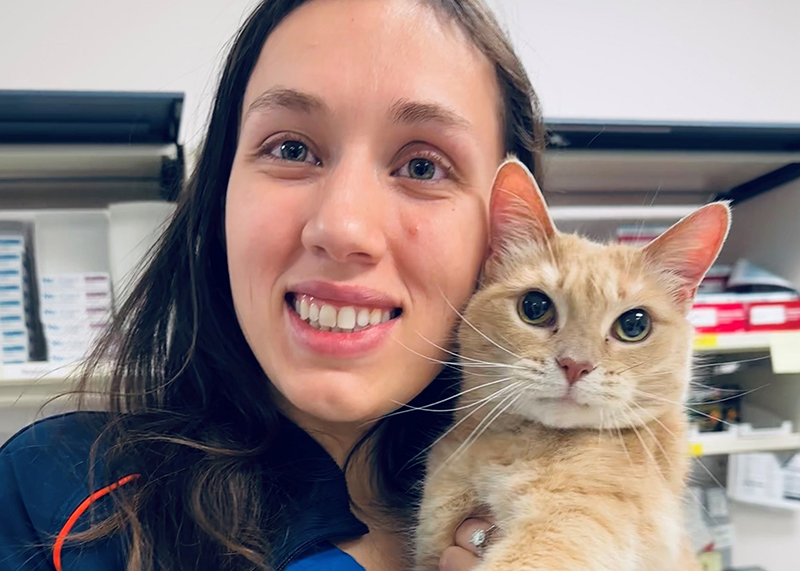
How You Can Show Your Appreciation
During Veterinary Technician Week, consider taking a moment to show appreciation for the veterinary staff that care for your pets. Here are a few simple but meaningful ways to express your gratitude:
- Say Thank You: A heartfelt “thank you” can go a long way in making someone’s day. Whether it’s in person, over the phone, or in a follow-up email, acknowledging their hard work is always appreciated.
- Leave a Positive Review: Many people read online reviews before choosing a veterinary clinic. By sharing your positive experiences, you’re not only recognizing the staff but also helping future pet owners find quality care.
- Spread the Word on Social Media: If your vet tech or CSR has gone above and beyond for your pet, share your experience on social media during Veterinary Technician Week! It’s a great way to celebrate them and spread the word about the essential role they play.
- Respect Their Time: Veterinary teams work incredibly hard, often managing a heavy caseload while maintaining the highest standard of care. Being on time for your appointments, following post-care instructions, and showing patience when things get busy can go a long way in showing your appreciation.
Veterinary technicians and CSRs are the heartbeat of our clinic. We are so grateful for their tireless work and compassionate care, and we know you are too! Let’s make this Veterinary Technician Week a special one by celebrating their essential role in keeping our furry family members healthy and happy.
Thank you for your continued trust in our team!
– Ana Valbuena (she/her/ella), DVM
Celebrando la Semana del Técnico Veterinario: Por Qué los Técnicos Veterinarios y Representantes de Servicio al Clientes Son Vitales para el Cuidado de Tu Mascota
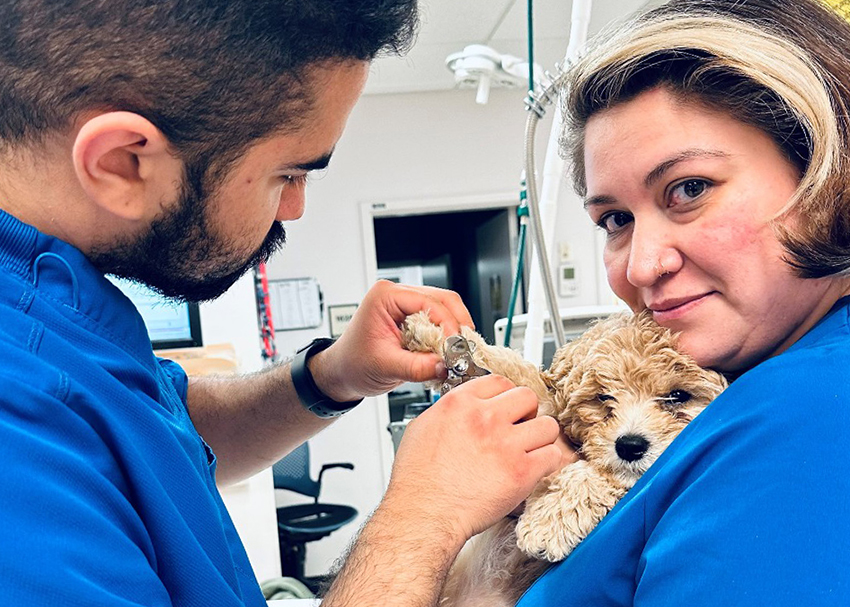
La Semana del Técnico Veterinario (Octubre 13 – 19) es un momento para reconocer y celebrar el increíble trabajo que los técnicos veterinarios, asistentes veterinarios, y los Representantes de Servicio al Clientes hacen todos los días en el mundo de la medicina veterinaria. Estos profesionales son los héroes anónimos que aseguran que tu mascota reciba el mejor cuidado posible, y juegan un papel crucial en el buen funcionamiento de cualquier clínica veterinaria, incluida la nuestra.
El Rol de los Técnicos Veterinarios
Los técnicos veterinarios son mucho más que “enfermeros de mascotas.” Son profesionales altamente capacitados para realizar una amplia gama de tareas, desde extraer sangre y realizar pruebas de laboratorio hasta asistir en cirugías, administrar medicamentos y brindar atención de emergencia. Actúan como el segundo par de manos del veterinario, asegurando que los procedimientos se realicen sin problemas y que tu mascota esté cómoda durante su visita.
Los técnicos veterinarios también brindan un apoyo invaluable a los dueños de mascotas. Se toman el tiempo para explicar los tratamientos médicos, mostrarte cómo administrar los medicamentos en casa, y a menudo se convierten en una persona de confianza en el cuidado a largo plazo de tu mascota. Su conocimiento, experiencia y compasión los hacen esenciales para el éxito de cada clínica veterinaria.
La Importancia de los Representantes de Servicio al Clientes
Los Representantes de Servicio al Clientes son a menudo el primer y último punto de contacto cuando visitas nuestra clínica. Te reciben con una sonrisa, te ayudan a programar citas, responden preguntas y aseguran que el proceso de registro y salida sea fluido. Ellos gestionan el flujo de la clínica y ayudan a mantener todo organizado, para que el equipo veterinario pueda enfocarse en brindar el mejor cuidado posible a tus mascotas.
Un buen coordinador de clientes puede hacer que una visita estresante sea más fácil al ofrecer una comunicación clara, empatía y un servicio excepcional. Son el pegamento que mantiene unido el trabajo de la oficina, ayudando a crear un ambiente cálido y acogedor tanto para las mascotas como para sus dueños.
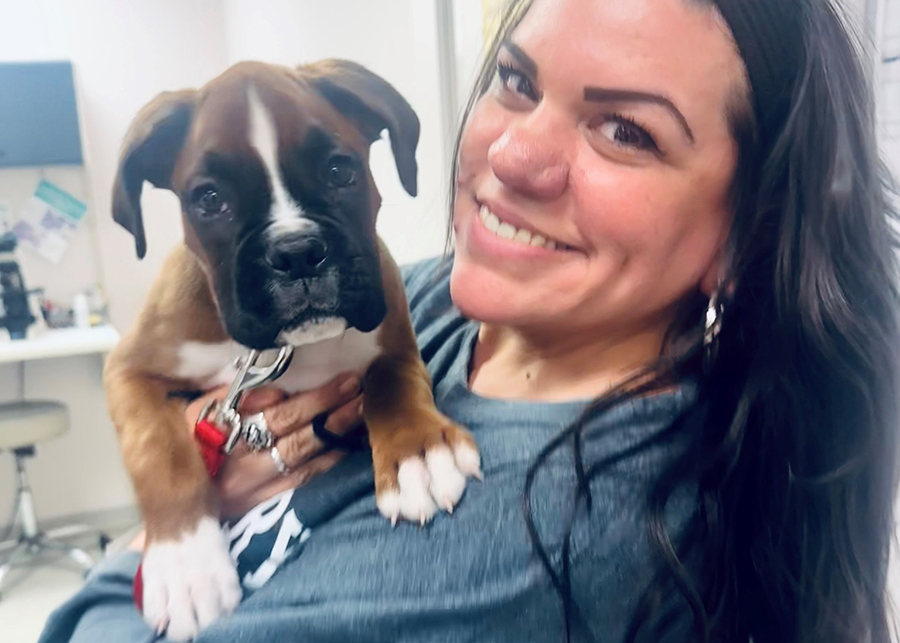
Cómo Puedes Mostrar Tu Agradecimiento
Durante la Semana del Técnico Veterinario, considera tomarte un momento para mostrar tu agradecimiento al personal veterinario que cuida de tus mascotas. Aquí te damos algunas formas simples pero significativas de expresar tu gratitud:
- Di Gracias: Un sincero “gracias” puede alegrar el día de alguien. Ya sea en persona, por teléfono o en un correo electrónico de seguimiento, reconocer su trabajo siempre es bien recibido.
- Deja una Reseña Positiva: Muchas personas leen reseñas antes de elegir una clínica veterinaria. Compartir tus experiencias positivas no solo reconoce al personal, sino que también ayuda a otros dueños de mascotas a encontrar atención de calidad.
- Comparte en Redes Sociales: Si tu técnico veterinario o coordinador de clientes ha hecho un esfuerzo adicional por tu mascota, ¡comparte tu experiencia en redes sociales durante la Semana del Técnico Veterinario! Es una excelente manera de celebrarlos y dar a conocer el rol esencial que desempeñan.
- Respeta su Tiempo: Los equipos veterinarios trabajan increíblemente duro, a menudo manejando una carga de trabajo pesada mientras mantienen el más alto estándar de atención. Llegar a tiempo a tus citas, seguir las instrucciones de cuidado y mostrar paciencia cuando las cosas se ponen ocupadas puede ser una gran muestra de aprecio.
Los técnicos veterinarios y los Representantes de Servicio al Clientes son el corazón de nuestra clínica. Estamos muy agradecidos por su incansable trabajo y atención compasiva, ¡y sabemos que tú también! Hagamos que esta Semana del Técnico Veterinario sea especial celebrando su rol esencial en mantener a nuestros queridos miembros peludos de la familia sanos y felices.
¡Gracias por seguir confiando en nuestro equipo!
– Ana Valbuena (she/her/ella), DVM
Chronic Kidney Disease in Dogs and Cats
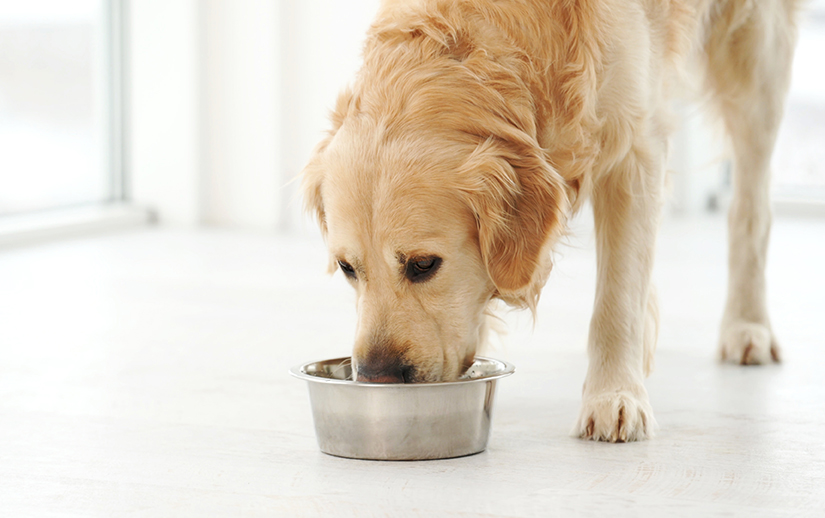
Chronic kidney disease (CKD) is the loss of kidney function over time. We tend to see this disease in our older cats and dogs.
The kidneys have a large amount of reserve capacity to continue to do their job effectively. For that reason, clinical signs of kidney disease may not occur until 75% of kidney function has been lost. In many cases, this means that the kidneys were losing function for months to years before clinical signs became evident. That’s why routine bloodwork and urinalysis in our senior patients, even when they are feeling well, are crucial steps for making an early diagnosis.
CKD has four stages. Pets in stages I and II may not show any clinical signs of kidney disease. In later stages, pets typically experience increased thirst and urination, lethargy, weight loss, vomiting, diarrhea, signs of dehydration, and decreased appetite.
For dogs, age of onset is related to the size of the dog. In small dogs, the age of onset generally ranges between 10 and 14 years. Large dogs, however, can experience CKD as early as 7 years of age.
In cats, CKD typically occurs at age 7 or older. An estimated 30% to 40% of cats over 10 years of age are affected, and for cats over 15 years of age, the percentage affected doubles.
The Many Functions of Kidneys
Regulating hydration. In times of dehydration, the kidney responds by conserving water. In times of excess water, the kidney efficiently removes the excess to prevent dilution of the blood. As the kidneys fail, they are no longer able to do this. The result is that urine is no longer concentrated (which means too much water is lost in the urine), and pets must drink more water to stay adequately hydrated.
Balancing calcium and phosphorus. When either calcium or phosphorus become too high, there is a risk for mineralization of the tissues. As the kidneys fail, phosphorus starts to rise. Treatment for patients with CKD requires monitoring phosphorus levels and giving a prescription diet and/or medication to keep phosphorus in a normal range.
Balancing electrolytes. As the kidneys fail, they lose their ability to conserve potassium, so these values must be closely monitored. Low potassium can lead to weakness and the need for supplementation.
Regulating blood pressure. Sensors within the kidneys monitor for high blood pressure. If these sensors are damaged, there is the risk of high blood pressure, which can damage other organs. In pets with CKD, blood pressure must be closely watched.
Retaining protein. Healthy kidneys prevent protein in the blood from being lost to the urine. As the kidneys fail, protein can leak into the urine, which can worsen kidney disease.
Producing red blood cells. The kidneys are responsible for a hormone called erythropoietin, which tells the body to produce more red blood cells when they are needed. Without this hormone, anemia can occur, so packed cell volume (PCV) and hematocrit, two red blood cell parameters, must be monitored.
Managing Chronic Kidney Disease
Chronic kidney disease, unfortunately, cannot be cured. It is a progressive disease, but it can be managed. The goals of treatment include minimizing the amount of waste products in the blood, addressing any electrolyte disturbances, maintaining adequate hydration, controlling blood pressure if high, and slowing the progression of the disease.
Pets with CKD pets must always have access to fresh water. Because their kidneys cannot concentrate their urine appropriately, these pets lose a large amount of water in the large volumes of urine they produce. Therefore, they must drink a lot of water to stay hydrated.
These pets must eat a diet specially formulated for kidney disease. Kidney diets contain less protein, sodium, and phosphorus and increased omega-3 fatty acids. Introduce the new diet over a period of 7 to 10 days. Gradually increase the proportion of the kidney diet and decrease the amount of the old diet until the pet has transitioned to eating only the new diet. Kidney diets come in a variety of flavors, so if your pet develops a flavor aversion, other options can be substituted.
As the kidney disease progresses, additional treatment may be needed to support your pet. For example, your pet may need subcutaneous fluids at home, anti-emetic (anti-vomiting) drugs, appetite stimulants, phosphorus binders, medication to reduce protein loss in the urine, medication to lower blood pressure, and potassium supplementation.
Prognosis
It is difficult to predict how long a pet with CKD will live. Regular check-ups and blood and urine tests allow doctors to monitor the progression of the disease. You should also watch your pet closely to notice changes in their health and behavior. The frequency of check-ups will be determined by your veterinarian based on staging of the disease, response to any treatments implemented, and whether your pet has developed new or worsening clinical signs.
Since early detection is paramount, consider discussing blood and urine testing for your senior pet during their next visit to the veterinarian.
– Dr. Jeanette Barragan
La Importancia de los Cultivos de Orina en las Infecciones del Tracto Urinario y Consejos Para Prevenir
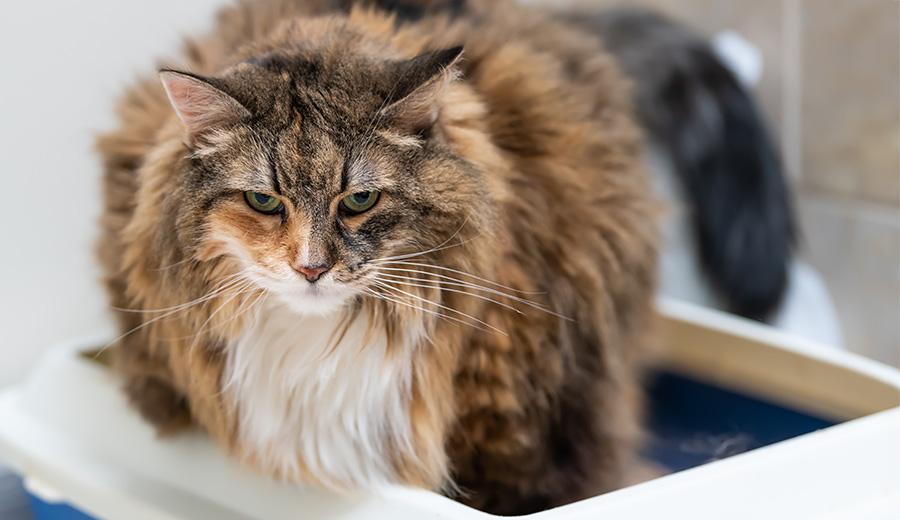
Las infecciones del tracto urinario (ITU) son una preocupación común en la medicina veterinaria. Estas infecciones pueden causar una serie de síntomas incómodos y potencialmente graves en nuestras mascotas, incluyendo micción dolorosa, aumento de la frecuencia urinaria, y en casos más severos, fiebre y letargo. Aunque los síntomas pueden sugerir una ITU, otras condiciones, como las piedras en la vejiga o las enfermedades renales, pueden presentar síntomas similares. Por eso es crucial que la mascota sea examinada por su veterinario antes de empezar tratamiento.
Para diagnosticar y tratar eficazmente una ITU, uno de los pasos más críticos es realizar un cultivo de orine. Una vez que se identifica la bacteria causante, el cultivo de orine también suministra información crucial sobre qué antibióticos serán efectivos. Algunas bacterias pueden ser resistentes a ciertos antibióticos, y el uso de un medicamento ineficaz no solo retrasa la recuperación, sino que también puede contribuir a la resistencia bacteriana.
Infecciones Crónicas o Recurrentes
En algunos casos, las infecciones urinarias pueden ser crónicas o recurrentes. Esto es especialmente común en mascotas con condiciones que predisponen a las infecciones, como la diabetes o las anormalidades anatómicas del tracto urinario.
Para estos animales, se recomienda evaluación por un veterinario por lo menos dos veces al año. Es aun mas importante los cultivos de orine regulares para estos pacientes para monitorear la efectividad del tratamiento y ajustar la terapia según sea necesario. Esta vigilancia continua ayuda a prevenir complicaciones graves y a mantener la salud a largo plazo de la mascota.
Consejos Para Prevenir ITUs
- Hidratación Adecuada: asegúrese que su mascota siempre tenga acceso a agua fresca y limpia. Nunca debe prevenir que su mascota tome más agua. Hidratación adecuada ayuda a eliminar las bacterias del tracto urinario.
- Descansos Regulares para Orinar: Permite que tu perro orine con frecuencia. Retener la orina durante períodos prolongados puede promover el crecimiento bacteriano. La regla de las cajas de arena para los gatos es una caja por gato más una extra.
- Dieta Adecuada: Una dieta equilibrada es importante para mantener la salud general y fortalecer el sistema inmunológico. Su veterinario puede aconsejar en una dieta para su mascota.
- Higiene: Mantén limpia el área genital de tu perro. Los gatos son muy buenos en mantener su propria limpieza, pero pueden tener dificultades si están sobrepeso o si tiene artritis. Recorta el pelo alrededor del área genital para evitar que las bacterias se adhieran al pelaje. Limpia la parte trasera y luego la vulva después de ir al baño.
- Mantener un Peso Saludable: Las mascotas con sobrepeso son más propensos a las ITUs. El ejercicio regular y una dieta adecuada pueden ayudar a mantener un peso saludable.
- Monitorear los Síntomas: Observa los signos de una ITU, como micción frecuente, esfuerzo, sangre en la orina o comportamiento inusual. La detección y el tratamiento tempranos pueden prevenir problemas más graves.
- Evitar el Estrés: El estrés puede debilitar el sistema inmunológico. Trata de minimizar las situaciones estresantes y proporciona un ambiente calmado y estable.
Y como nota final, vamos a estar cerrados el 19 de junio por Juneteenth. Regresamos de 7 am – 7 pm el próximo día.
– Ana Valbuena (she/her/ella), DVM
Urinary Tract Infections: Why We Culture, Tips for Prevention

Urinary tract infections (UTIs) are a common concern in veterinary medicine. These infections can cause a range of uncomfortable and potentially serious symptoms in our pets, including painful urination, increased urinary frequency, and in more severe cases, fever and lethargy. Although symptoms may suggest a UTI, other conditions, such as bladder stones or kidney disease, can present similar symptoms. This is why it is crucial that the pet is examined by a veterinarian before starting treatment.
To diagnose and effectively treat a UTI, one of the most critical steps is performing a urine culture. Once the causative bacteria are identified, the urine culture also provides crucial information about which antibiotics will be effective. Some bacteria may be resistant to certain antibiotics, and using an ineffective medication not only delays recovery but can also contribute to bacterial resistance.
Chronic or Recurrent Infections
In some cases, urinary infections can be chronic or recurrent. This is especially common in pets with conditions that predispose them to infections, such as diabetes or anatomical abnormalities of the urinary tract.
For these animals, evaluation by a veterinarian at least twice a year is recommended. Regular urine cultures are even more important for these patients to monitor treatment effectiveness and adjust therapy as needed. This continuous monitoring helps prevent serious complications and maintain the long-term health of the pet.
Tips for Preventing UTIs
- Adequate Hydration: Ensure your pet always has access to fresh, clean water. Never prevent your pet from drinking more water. Adequate hydration helps flush out bacteria from the urinary tract.
- Regular Bathroom Breaks: Allow your dog to urinate frequently. Holding urine for prolonged periods can promote bacterial growth. The rule for litter boxes for cats is one box per cat plus one extra.
- Proper Diet: A balanced diet is important to maintain overall health and strengthen the immune system. Your veterinarian can advise on a diet for your pet.
- Hygiene: Keep your dog’s genital area clean. Cats are very good at keeping themselves clean, but they may have difficulties if they are overweight or have arthritis. Trim the hair around the genital area to prevent bacteria from clinging to the fur. Wipe the rear and then the vulva after going to the bathroom.
- Maintain a Healthy Weight: Pets that are overweight are more prone to UTIs. Regular exercise and a proper diet can help maintain a healthy weight.
- Monitor Symptoms: Watch for signs of a UTI, such as frequent urination, straining, blood in the urine, or unusual behavior. Early detection and treatment can prevent more serious problems.
- Avoid Stress: Stress can weaken the immune system. Try to minimize stressful situations and provide a calm and stable environment.
And as a final note, we will be closed on June 19 for Juneteenth. We will be back from 7 am to 7 pm the next day.
– Ana Valbuena (she/her/ella), DVM
Worms and Fleas and Ticks, Oh My!
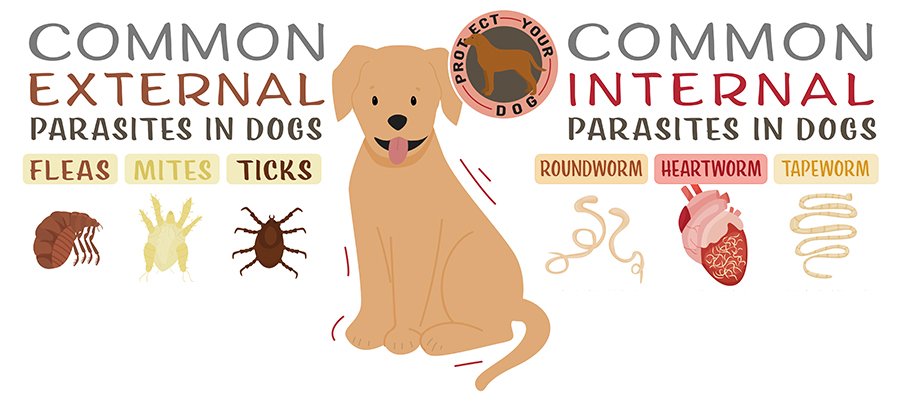
Our clinic is switching from Sentinel Spectrum to Interceptor Plus. So what does that mean for your pups?
To say that it can be confusing when it comes to knowing what preventative products your dog needs is a bit of an understatement. Does your pet really need this stuff? Is it just marketing? Is this a Coke vs Pepsi thing, or are there actual differences in these products?
It can be confusing even for us in the field trying to keep up with all the new options. That’s why we at Medical District Veterinary Clinic have curated a few products we believe in, so you don’t have to do all the research.
Here is what we have and why.
| Product Name | Parasites Covered | Pros | Cons |
| Heartworm/Intestinal Parasites | |||
| Heartgard | Heartworm, hookworms, roundworms, whipworms | + Less expensive + Beef flavored soft chew + More palatable | – Does not cover tapeworms |
| Interceptor Plus | Heartworm, hookworms, roundworms, whipworms, tapeworms | + More expansive coverage of intestinal parasites | – Less economical than Heartgard |
| ProHeart 12 | Heartworm (for 1 year), hookworms, roundworms, whipworms | + One-time injection + About the same price as 12 months of Heartgard | – Hookworm, roundworm, and whipworm preventative only lasts for 1 month |
| Simparica Trio | Heartworm, hookworms, roundworms, whipworms, fleas, ticks | + Product closest to being an “all-in-one” + Less expensive than purchasing Heartgard and NexGard together | – Does not cover tapeworms |
| Fleas/Ticks | |||
| Frontline Gold | Fleas, ticks | + More economical than oral products + Topical (no concern with food sensitivities) | – Less effective against ticks than oral preventatives – Topical (can be messy; need to keep pet away from children for a few hours after application) |
| NexGard | Fleas and ticks | + Works within hours + Soft chew | – More expensive than topicals |
| Simparica Trio | See above | See above | See above |
So which products should you use for your dog? We recommend that all dogs are covered for heartworm, fleas, and ticks year-round, so here are a few combinations to consider:
- Want the simplest way to have your pet covered? Simparica Trio
- Want the most comprehensive coverage? NexGard and Interceptor Plus
- Want to avoid any oral medications? Proheart 12 and Frontline Gold
- Want the most economical year-round coverage? Heartgard and Frontline Gold
So why did we make the decision to transition away from Sentinel Spectrum and move to Interceptor Plus? Mostly to help keep costs down for you. Interceptor Plus is less expensive, and there is just a slight difference in that Interceptor Plus does not have Lufenuron, which stops the development of flea eggs. Lufenuron doesn’t kill adult fleas, so we recommend an additional flea preventative anyway.
If you are dead set on keeping your pup on Sentinel Spectrum, not a problem! We are happy to approve a prescription for you, as long as your pet is a current patient of ours and has an up-to-date heartworm test.
– Dr. Alyssa Kritzman
Illustration from AdobeStock by Double Brain
Heart Murmurs in Dogs and Cats
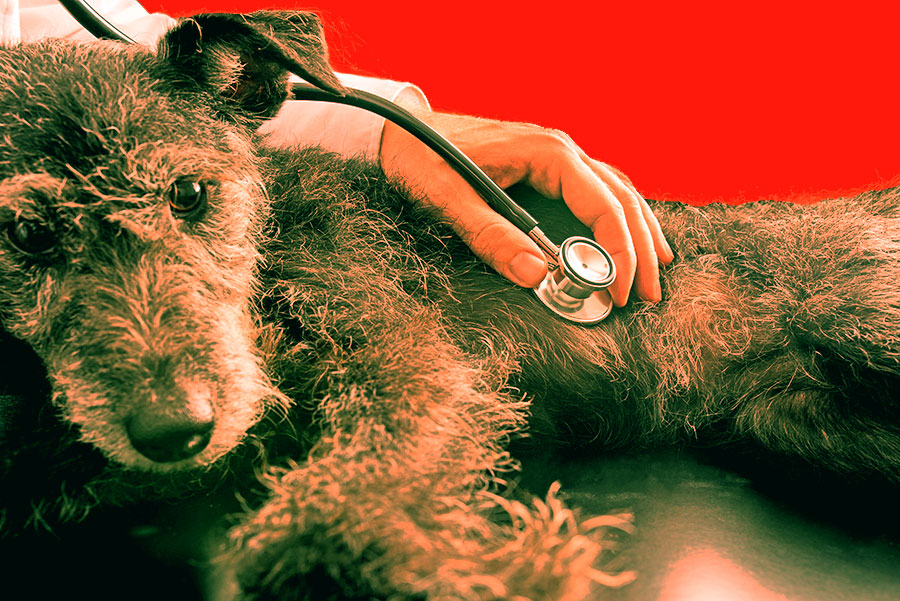
Your veterinarian told you that your pet has a heart murmur, but what does that mean?
A heart murmur is an additional noise heard due to the abnormal flow of blood through the heart’s valves or chambers. This additional noise is then graded on a scale of 1 to 6 based on how loud the heart murmur is. A 1 means the softest and hardest to hear, and a 6 means the loudest.
How loud the heart murmur is does not necessarily correlate to the severity of heart disease. If your pet has a heart murmur, it is not an immediate cause for panic, but rather lets your veterinarian know that more investigation should be done to try and find the cause.
What Causes a Heart Murmur?
There are many causes of heart murmurs. Some heart murmurs are considered “innocent,” also termed “physiologic.” Other heart murmurs are a result of a disease, and these are known as “pathologic.” Pathologic heart murmurs can be caused by a structural problem with the heart or can be caused by disease not related to the heart itself, called functional heart murmurs.
Innocent Heart Murmurs
An innocent heart murmur means there is no heart disease that explains the presence of the heart murmur. In dogs, these murmurs occur most often in puppies. They can occur in cats of any age.
These murmurs are usually very soft. In puppies and kittens, these murmurs usually appear around 6 to 8 weeks of age and should go away on their own by the age of 4 to 5 months. In adult cats, stress may cause an innocent heart murmur.
Structural Heart Disease
An abnormal defect or structure that disrupts the normal flow of blood leads to structural heart disease. Examples of these include valve disease that causes the valves between the chambers of the heart to not close or open properly, a hole in the heart that causes two chambers or two arteries to be connected when they shouldn’t be, and narrowing or widening of the blood vessels.
Functional Heart Murmurs
Heart murmurs can also be caused by disease outside of the heart, or extra-cardiac disease. There are many causes of functional heart murmurs, including anemia (low levels of red blood cells), fever, pregnancy, infection, obesity, being significantly underweight, and hypoproteinemia (low protein levels in the blood).
Signs, Diagnostics, and Treatment
In some cases, your pet may not be experiencing any signs of having a heart murmur. In others, you may have noticed signs of poor appetite, exercise intolerance, trouble breathing or fast breathing when resting or sleeping, collapse or fainting, weight loss, coughing, pale gums, and weakness.
If your pet is found to have a heart murmur, your veterinarian will discuss additional testing that may be beneficial in finding the cause of the heart murmur and to determine the severity of the condition causing the murmur. Diagnostics that may be suggested include bloodwork, chest X-rays, and blood pressure testing.
Your veterinarian will likely suggest referral to a veterinary cardiologist or an imaging center for an echocardiogram. An echocardiogram is an ultrasound of the heart to get an idea of what the heart looks like and how it is functioning in real time. More specifically, an echocardiogram will provide information about the shape, size, and function of the heart’s four chambers, valves, and other surrounding structures.
Together, these diagnostics will provide your pet’s veterinarian with the information needed to determine what treatment and medication, if needed, will be necessary to help your pet live a longer, happy life.
By Dr. Jeanette Barragan
Illustration from photo by Gajus
What’s Urgent and What’s an Emergency?
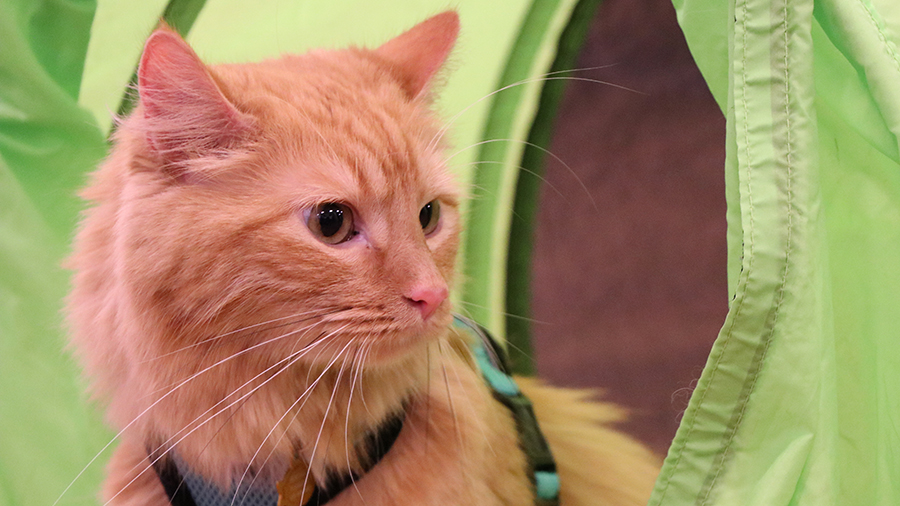
Do any of the following sound familiar? Or have you ever contemplated what you would do if your pet became ill or injured when your primary care clinic is unavailable?
- Winnie cut her paw at the dog park. It is not a large cut but looks pretty deep and is bleeding quite a bit. Medical District Vet Clinic is closed or, unfortunately, fully booked. What do I do?
- Tiger has not been eating for the past three days. Now it’s Friday night and I am off work and would like her examined as I am getting worried. Where should I take her?
- Bowie has not urinated in over 8 hours. He is in and out of the litter box, trying to pee. Where should I go?
I am sure many of you have had similar questions and or situations. Fortunately, multiple options exist for care when you can’t bring your pet to a primary care clinic. To help our clients, we have created handouts listing options for emergency clinics and specialty hospitals in Chicago.
In this blog, I want to help explain the difference between the urgent care and emergency clinics here in the Chicago area and when I would recommend going where.
After-Hours Care Options
Urgent care facilities would typically not be set up to perform surgery or hospitalize overnight but could handle most cases of pet illness. Most cases can be treated as outpatient. If not, urgent care facilities may recommend transfer to a specialty emergency clinic.
Non-specialty emergency clinics are typically open 24 hours and have varied capabilities when it comes to both diagnostics and doctor capabilities. They can handle most emergencies, but do not have the luxury of referring to or consulting with a specialist on staff. In severe cases, they may recommend referral. If your pet is very ill, I suggest that you ask them about referral to a specialty hospital.
Specialty/emergency hospitals will have the capability of performing the most advanced diagnostics and have the benefit of specialty referral when needed. These hospitals have board-certified veterinary specialists, who have 4 to 6 years of specialty training beyond veterinary school.
Think about human medicine and all the specialties. Veterinary medicine is not quite as specialized. Still, our specialties include ophthalmology, surgery, oncology, internal medicine, dermatology, dentistry, radiology, emergency and critical care, and more. These doctors often work with the most complicated, severe cases of illness and disease and manage the cases while hospitalized.
What’s the Cost?
How much do these hospitals cost? I am sure many of you are contemplating this question.
First, I want to point out that Medical District Vet Clinic is not associated with any urgent care or specialty hospitals in Chicago. For this reason, I have limited knowledge of fees. If we refer a case from our clinic directly to an ER/specialty hospital, they will often give a rough estimate.
From my experience with the specialty hospitals and emergency clinics in Chicagoland, I would say they are similarly priced. However, in some cases, the (non-specialty) emergency clinics seem to be more expensive than the specialty hospitals, despite lacking specialty referral.
All these clinics should provide an estimate for care after examining your pet. Do not be afraid to speak up if the cost is out of budget. In some cases, diagnostics can be prioritized, and doctors can discuss options if their first recommendation is not financially feasible.
Dr. Sullivan’s Recommendations
Circling back to the questions posed initially:
Winnie’s cut paw: Any of the urgent or emergency clinics should be able to handle Winnie’s cut paw.
Tiger’s three days of not eating: If your cat hasn’t eaten in three days, take her to see a veterinarian. I would suggest going to an emergency clinic or specialty hospital.
Bowie’s inability to urinate: I would highly recommend a 24-hour specialty hospital. Bowie will likely need a procedure followed by a minimum of 48 hours of hospitalization. I believe the quality of care should be superior at a specialty emergency clinic and the cost similar to that of a non-specialty ER.
—Dr. Drew Sullivan
The State of the Medical District Veterinary Clinic
(from Dr. Sullivan’s perspective)

We’ve Seen Some Changes
Change was happening within the veterinary profession even before the pandemic, but change has drastically accelerated over the past four years.
Today, there is a veterinarian and veterinary staff shortage, expenses have increased more than inflation, and the demand for veterinary care has increased. This has resulted in overworked and tired veterinary professionals.
At Medical District Veterinary Clinic, we have always striven to maintain a healthy work-life balance for our staff. Despite these recent challenges, we remain committed to that goal. This blog post shares the facts about the impact of changes on our clinic and what that means for our clients.
Lots of Growth in Veterinary Medicine
Since the start of the pandemic there has been:
- An increase in demand for veterinary services (and an increase in consumer spending overall)
- An increase in pet ownership in the US, from 67% of households to 70% of households (according to US News and World Report)
- An increase in spending on pets in the US, jumping 19% between 2020 and 2021 for a total of $123.6 billion annually (according to Forbes)
On grooming, pet food, veterinary care, and luxury pet items, households are spending more than ever before. The largest group of pet owners is millennials, making up 32% of pet owners, followed by baby boomers at 27%.
While on the surface, this sounds great for the veterinary industry, it has resulted in stress across the profession. Veterinarians, veterinary technicians, and support staff have been stretched thin. The staffing issues that already existed within the profession were made worse by the acute, dramatic change in demand.
Growth at Medical District Vet Clinic
Things were no different at our practice. At the height of the staffing challenges, we had veterinarians and support staff seek positions at other practices, leaving us short-staffed and unable to meet our client demand. Unfortunately, this resulted in our inability to meet all our patients’ needs, and we had to deal with many frustrated and upset clients. As a result, staff and veterinarians were further discouraged and facing burnout.
Fortunately, we were able to recruit and hire three veterinarians and three certified veterinary technicians. We are very lucky to be in a position to offer competitive salary and benefits packages to aid in recruitment. We are now fully staffed and able to provide staff with work-life balance while also having availability to see patients in a timely manner.
But Also Some Negative Developments
Negative effects on the veterinary industry since COVID include large increases in both overall expenses and no-show appointments.
A trend for increased veterinary expenses over the past few years saw the biggest bump up in late 2022/early 2023. Drug and medical supplies, laboratory costs, and staffing costs have all increased. Total costs have increased at a rate higher than US inflation.
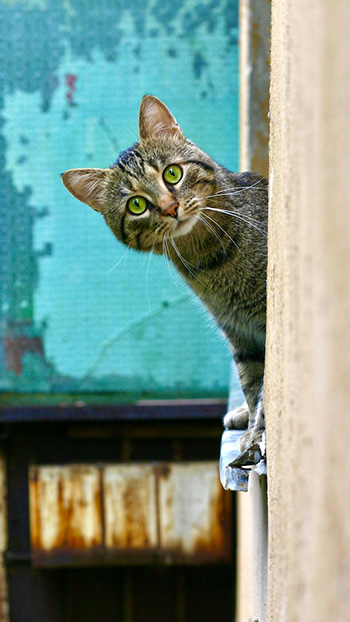
We have also seen a disappointing client trend, at our clinic and across the industry: a large increase in no-show appointments. We noticed this trend months ago and started tracking no-shows. We changed our confirmation protocol to help owners remember upcoming appointments, but that did not seem to make much difference.
March 2023 was by far our worst month: we had 92 no-shows. This is 92 more patients we could have helped or not had to refer to an emergency clinic if clients would have just called to let us know they would not be coming. As an existing client, you might be thinking this issue must be related to new clients, and you are partially correct. However, almost two-thirds of our no-shows are existing clients.
To combat this alarming new trend, we and other practices have implemented measures including cancellation/no-show fees or deposits required to book appointments.
How We Are Responding to These Trends
So what changes you can expect at the Medical District Veterinary Clinic? We will continue to strive to provide exceptional, high-quality veterinary care, while also providing our staff with the support to maintain a healthy work-life balance.
Because of the overall increase in expenses, we must increase prices to meet our costs. However, our prices for long-term medications will continue to match PetMeds’ online prices (see chart). Offering these medications at competitive prices provides convenience to our clients and allows us to help with clients’ issues or questions regarding pharmaceuticals. You also help us maintain that revenue stream when you purchase your pet’s medications from us instead of online.
| PetMeds Price-Matched Medications |
|---|
| Heartgard Plus (6/12 packs) |
| Sentinel Spectrum (6/12 packs) |
| NexGard (6/12 packs) |
| Simparica Trio (6/12 packs) |
| Senergy Cats (6/12 packs) |
| Rimadyl Chewable Tablets (60/90/180 count) |
| Deramaxx Chewable tablets (30/60/90 count) |
Beginning in May, we will also be instituting a deposit to book an appointment for all new clients as well as for existing clients who have a history of no-show.
We understand that sometimes life gets in the way, things happen, and clients may occasionally miss appointments. Unfortunately, the trends we are seeing have left us without another option. The deposit will be refundable if the appointment is canceled prior to 24 hours before the scheduled appointment. Please see here for the complete policy.
Thank you!
Lastly, I want to thank you all for trusting us in caring for your pets. I can speak on behalf of all the staff at Medical District Veterinary Clinic: We truly love what we do and daily have your pet’s best interest in mind.
Please don’t hesitate to reach out with any questions or concerns. Or compliments! Compliments for staff and doctors are always greatly appreciated.
Truly,
Drew Sullivan, DVM
Director, Medical District Veterinary Clinic
Fleas and Ticks Beyond Summer

Summer is winding down, and soon we’ll be able to enjoy cooler autumn weather. Along with the cooler weather comes the misconception that our pets no longer need their monthly flea and tick prevention.
Although it’s true that a lot of tick species are most active in the summer, there are some species of ticks that remain active in the fall in Illinois. Likewise, flea season in Illinois can last well into the winter. In fact, flea and tick infestations are most frequently encountered in September through November. Without the protection of monthly prevention, fleas and ticks can cause a variety of health issues for our pets.
Fleas
Our pets can get fleas from just about anywhere, including from other animals, outdoors, and even an indoor environment if the fleas hitch a ride from the outside on shoes. Fleas can cause itching and discomfort, and if your pet is allergic to fleas, they can develop flea allergy dermatitis. Flea allergy dermatitis causes intense itching, severe discomfort, hair loss, and secondary skin infections. In severe flea infestations, our pets can develop anemia secondary to blood loss from the fleas feeding. Finally, fleas also put our pets at risk for intestinal parasites called tapeworms, and Bartonella, a bacterial infection that may cause severe disease and require up to 6 weeks of treatment.
Ticks
Ticks can attach during walks, hikes, or any outdoor activity. This is especially true in wooded areas or places with tall grasses. Ticks can carry Lyme Disease, Rocky Mountain Spotted Fever, Anaplasmosis, and Babesiosis along with other bacterial and protozoal diseases. A variety of clinical signs can develop from these diseases, including swollen joints and lymph nodes, fever, lethargy, loss of appetite, diarrhea and vomiting. In severe cases, pets can develop heart and liver disease and kidney failure.
In addition to the health issues fleas and ticks cause for our pets, they can also infest your household. Clearing your household of these infestations can be labor-intensive, costly, and may take weeks to months to be fully effective.
So, as we approach the cooler months, keep your pets healthy and safe and resist the urge to skip that next monthly dose of their flea and tick prevention.
Dr. Jeanette Barragan
Photo by Tim Golder on Unsplash
